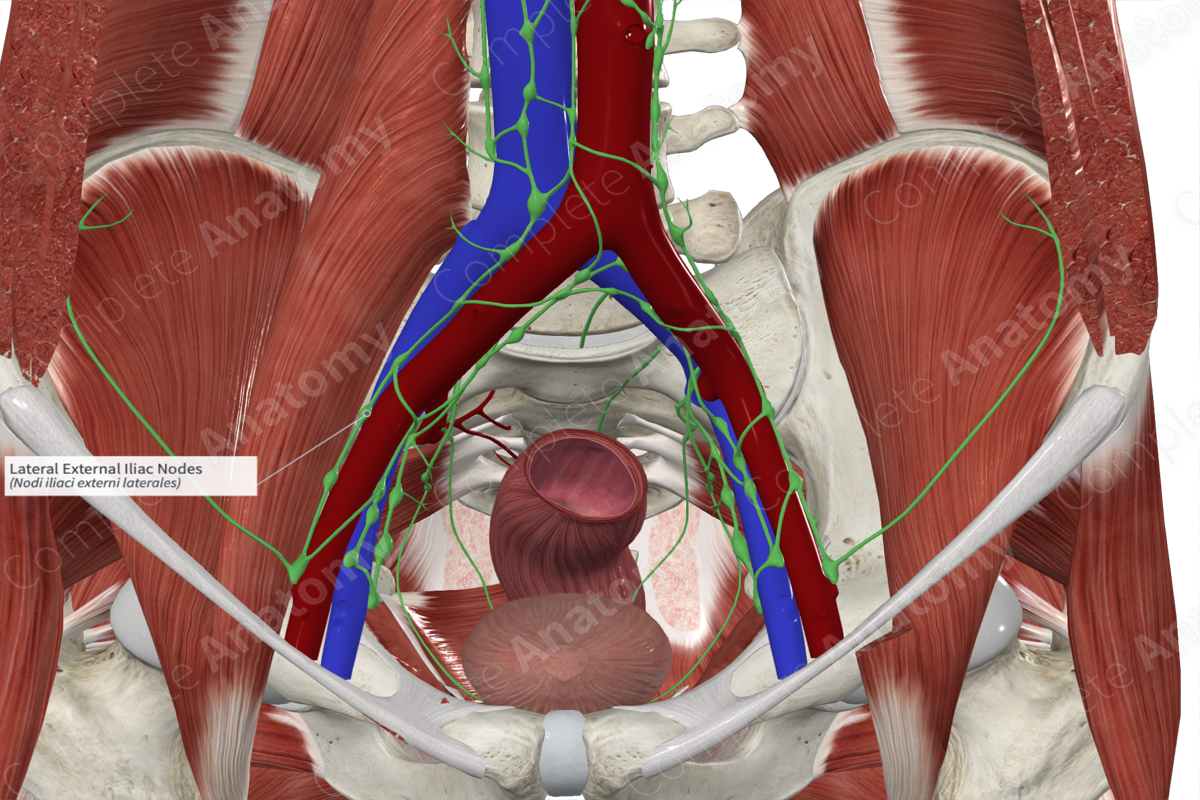
Quick Facts
Location: Lies lateral to the external iliac artery.
Drainage: Deep layers of the abdominal wall, viscera of pelvis, perineum, and lower limb via the inguinal lymph nodes.
Direction of Flow: Common iliac lymph nodes > Lateral aortic lymph nodes (left) and lateral caval lymph nodes (right) > left and right lumbar lymph trunk > cisterna chyli > thoracic duct.
Related parts of the anatomy
Description:
Description: (Location & Drainage)
The lateral external iliac lymph nodes are found lateral to the external iliac artery, usually between psoas major muscle and the aforementioned artery.
Most commonly, this group contains two nodes (Földi et al., 2012). The most superior node can be found at the bifurcation of the common iliac artery. The inferior node is found posterior to the inguinal ligament and is referred to as the lateral lacunar lymph node.
The lateral external iliac lymph nodes receive lymph from the viscera of the pelvis including the fundus of the bladder, urethra, cervix, superior part of the vagina, and prostate. The lateral lacunar lymph node of this group receives lymph from the deep layers of the abdominal wall, inferior to the umbilicus, the perineum, and lower limb via the inguinal lymph nodes.
The lateral external iliac lymph nodes send efferent lymph vessels to the lateral common iliac lymph nodes, which send lymph to the lateral aortic and caval lymph nodes of the left and right side, respectively.
References
Földi, M., Földi, E., Strößenreuther, R. and Kubik, S. (2012) Földi's Textbook of Lymphology: for Physicians and Lymphedema Therapists. Elsevier Health Sciences.
Description:
Description: (Location & Drainage)
The lateral external iliac lymph nodes are found lateral to the external iliac artery, usually between psoas major muscle and the aforementioned artery.
Most commonly, this group contains two nodes (Földi et al., 2012). The most superior node can be found at the bifurcation of the common iliac artery. The inferior node is found posterior to the inguinal ligament and is referred to as the lateral lacunar lymph node.
The lateral external iliac lymph nodes receive lymph from the viscera of the pelvis including the fundus of the bladder, urethra, cervix, superior part of the vagina, and prostate. The lateral lacunar lymph node of this group receives lymph from the deep layers of the abdominal wall, inferior to the umbilicus, the perineum, and lower limb via the inguinal lymph nodes.
The lateral external iliac lymph nodes send efferent lymph vessels to the lateral common iliac lymph nodes, which send lymph to the lateral aortic and caval lymph nodes of the left and right side, respectively.




